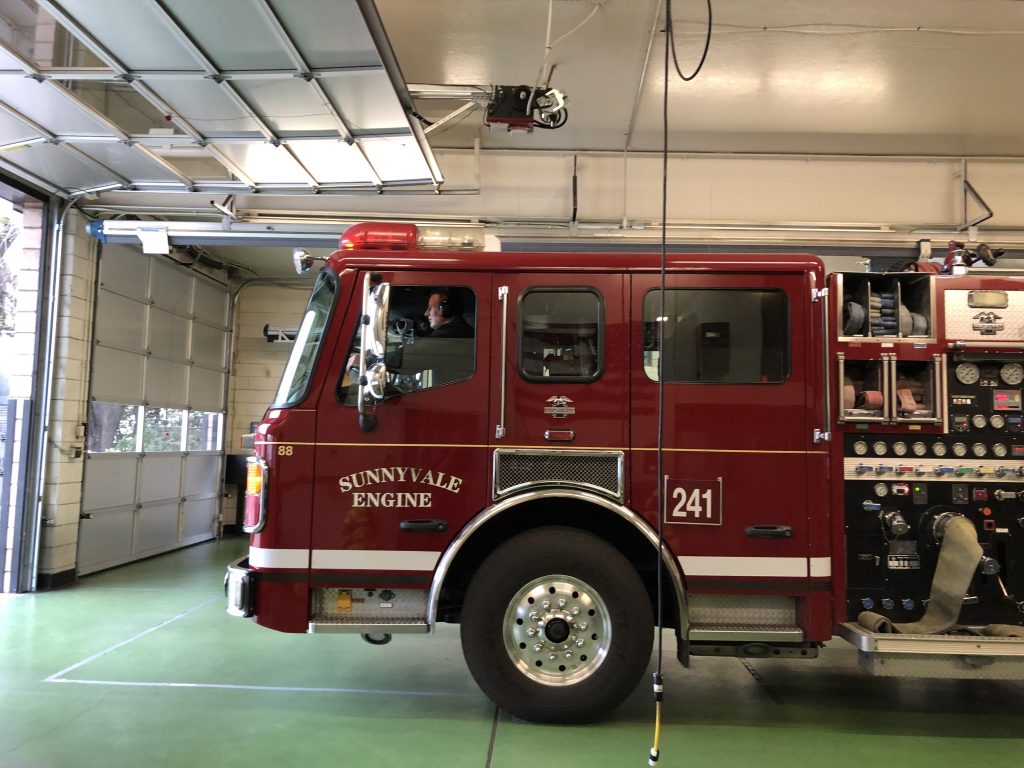With 201 sworn officers and 88 non-sworn personnel, the City of Sunnyvale is home to one of the largest, fully-integrated — combined — public safety departments in the country.
“Our police officers are actual firefighters and our firefighters are actual police officers,” said Captain Jim Choi of the Sunnyvale Department of Public Safety (DPS). “When you think of public safety in a community you’re thinking about fire, you’re thinking about EMS services, you’re thinking about police services. We are the Department of Public Safety, so we provide all three with just one department.”
Every single officer within the department is required to go through a rigorous training that includes 26 weeks of police academy, 18 weeks of fire academy and 8 weeks of EMT academy. Once they’re fully trained, they get to choose their area of service.
“For the year, you’re assigned to either the bureau of fire services or the bureau of police services or the bureau of special operations,” said Choi. “Within that year, you’ll primarily work…on a selected team in a selected squad, but you might work…a patrol overtime shift or a fire overtime shift.”
Every year, sworn officers get to bid for the division — fire or patrol — that they want to work for. Jobs are handed out based on seniority.
“If you’re locked in with what’s known as a ‘specialty’ — like CSI, K-9, hazmat, aerial truck operator, detectives — then you’re in that field for three to five years because as it suggests, [with] a specialty you get extra training, extra specialization, so obviously we want to be able to utilize your skills more.”
The reason the system works is because in an emergency situation all of the officers can serve dual purposes.
“[On a fire response call] they’ll change out from their police uniform to their fire turnouts and they’ll go and assist fire operations,” said Choi. “They might be on a hose line or on interior attack or basically bringing a hose into the fire.”
Captain Choi says police officers will also get dispatched to medical emergency calls and, because patrol cars can usually get there faster than a fire engine, response times can be faster.
All of the City’s officers joined for different reasons but they all seem to enjoy the ability to do both professions.
“My background is in police,” said Scott Mueting of Fire Station 1 on Mathilda Avenue. “My father was a fire captain and he tried to persuade me to go to the fire side. When I heard about Sunnyvale, I thought it’d be fun to do both.”
Mueting, along with his partner at Fire Station 1, Paul Kuczma, both used their dual training last year as part of a strike team that helped out with the fires in Southern California and the Camp Fire in Butte County.
“I was paramilitary with rescue,” said Fire Station 1 Supervisor Scott Simpson. “I wanted to do something where I could help people.”
“I’m a local kid, so I, kind of, my whole life grew up knowing the dynamics of DPS,” said Justin Kirk of Fire Station 1. “The fire aspect was kind of icing on the cake.”
Kirk graduated from Fremont High School and San Jose State University. He was recently named to the department’s SWAT team and will work with the team in addition to helping to man Fire Station 1.
“What I thought was cool was the fact that you get to do both,” said Choi, who was recruited while he was active duty in the Army and stationed in Hawaii. “I spent eight years in the military and when I was looking at a service profession, I was like, ‘you know what? I definitely want to be a firefighter.’ I definitely was very interested in becoming a police officer and Sunnyvale just made it easy. Why not do both?”
While the DPS model works for Sunnyvale, Choi is quick to say that it would not be easy for a City like San Jose to switch to the same system. Sunnyvale began DPS in 1950, when the department was just getting started and only had a volunteer fire department and a small police department to integrate.
“I think when it just started developing, it kind of set that tone in place,” said Choi. “I think the community expects that service; where you’re providing one administration, one command team, one department.”
